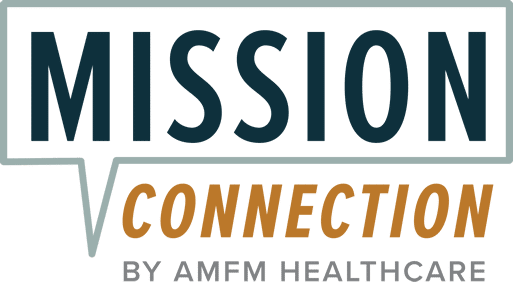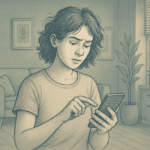ADHD Treatment, Diagnosis, and Symptom Management
Attention-deficit hyperactivity disorder, or ADHD, is a common neurodevelopmental disorder affecting focus, impulsive control, and other behaviors. Research suggests ADHD occurs in up to 11.3% of children and is more common in boys than girls. If undiagnosed, ADHD can persist into adulthood, affecting 4.4% of the adult population.
As a condition, ADHD is often largely misunderstood and its impacts can stretch far beyond its core symptoms, touching all aspects of life. Children and teens with undiagnosed ADHD are often misjudged as unmotivated or disruptive, when, in reality, their actions stem from how their brains are wired differently than others.
Additionally, many believe that ADHD purely concerns hyperactivity, overlooking the struggles with focus, organization, and emotional regulation that many with ADHD face. Misconceptions such as these create stigma and can delay important diagnosis and treatment.
As ADHD often occurs alongside other conditions such as anxiety and depression, and can reduce overall quality of life, early diagnosis and support are essential.

Key Takeaways
- ADHD treatment at Mission Connection Healthcare includes both diagnosis and long-term care for teens and adults.
- Our approach to ADHD symptom management helps individuals build coping skills and improve daily functioning.
- We provide therapy, medication management, and personalized treatment plans tailored to each patient’s unique needs.
- Both in-person and telehealth options are available to make ADHD treatment more accessible and convenient.
Table of Contents
Warning Signs and Symptoms of ADHD
The hallmark symptoms of ADHD include:
- Inattention: Difficulty sustaining focus and following instructions, being easily distracted, and making mistakes in tasks.
- Hyperactivity: Moving excessively, fidgeting, or seeming constantly restless or “on the go.”
- Impulsivity: Acting without thinking, interrupting others, or struggling with turn-taking. In extreme cases, impulsivity can sometimes be dangerous.
ADHD is usually classified into three main types: inattentive, hyperactive-impulsive, and combined. We’ll say more on this shortly.
Additionally, symptoms manifest differently across the lifespan. For instance, when ADHD struggles collide with the “raging hormones” of puberty, symptoms often worsen or intensify. Similarly, evidence increasingly suggests that perimenopause and menopause in women can exacerbate ADHD-related challenges, making it almost impossible to mask symptoms.
ADHD symptoms can significantly affect relationships, school work, and work life. But with the right support, challenges can be transformed into opportunities for growth and resilience. Remember, you’re not alone. At Mission Connection, we’re here to support you.
Dangerous, Impulsive Behaviors Linked to ADHD
Impulsivity is a core symptom of ADHD. This means that people with ADHD often struggle with self-control and may be more prone to acting without thinking. For instance, someone with ADHD might make risky decisions without considering the consequences – sometimes causing exposure to danger.
Possible impulsive behaviors leading to increased risk include:
- Reckless driving
- Substance misuse
- Unsafe financial decisions
- Engaging in physical risks
Impulsivity is a spectrum of behaviors, so it can also include actions such as speaking without thinking, talking before their turn, or blurting out answers. Regardless of where on this spectrum someone falls, there is still an undeniable emotional toll on the person with ADHD, as well as on their loved ones.
Behavioral therapy reinforces thoughtful decisions and improves self-control. In this way, it can help people with ADHD to pause, reflect, and act more deliberately – particularly in challenging situations. Other helpful coping strategies include mindfulness training and improving self-regulation skills.
If you think you may be experiencing impulsive behavior that is impacting your safety or quality of life, we highly recommend reaching out to a healthcare provider for professional support.
Types of ADHD
As mentioned, ADHD can be classified into three main types according to symptoms: inattentive, hyperactive-impulsive, and combined. Here’s a whistle-stop tour of the subtypes:
- Inattentive: Trouble focusing, forgetfulness, and difficulty completing tasks.
- Hyperactive-Impulsive: Excessive energy, restlessness, interrupting, or impulsivity.
- Combined: A mix of inattentive and hyperactive-impulsive symptoms.
ADHD symptoms can change across the life course. In children, ADHD signs often include hyperactivity, constant fidgeting, and difficulty following instructions. Teens with ADHD may exhibit more pronounced issues with impulsivity, emotional regulation, challenges with school work, and fears of social rejection (also called rejection-sensitive dysphoria). Hyperactivity tends to subside in adults, but difficulties with focus, time management, and impulsivity may persist – sometimes intensified by transitions like menopause.
Each stage of life often requires tailored strategies to address its unique challenges.
The Link Between ADHD and Anxiety
ADHD and anxiety often go hand in hand, as up to 50% of adults with ADHD may struggle with an anxiety disorder. This can kickstart a cycle of challenges where difficulties with focusing, organization, and impulsivity fuel worry – and vice versa.
The symptoms of anxiety and ADHD can sometimes be hard to distinguish between. For instance, restlessness, difficulty concentrating, or feeling overwhelmed are features of both conditions – making diagnosis a challenge. However, understanding this overlap can unlock tailored strategies for managing both conditions in a well-rounded way.
Examples of strategies that can be used to manage co-occurring ADHD and anxiety are:
- CBT for anxiety and ADHD
- Mindfulness practices
Telehealth services that address both conditions
How ADHD Is Diagnosed
The first step to an accurate diagnosis of ADHD is consulting a healthcare professional. Once you do, you’ll likely be invited to a screening which will be used to rule out other health problems. Clinicians typically use a combination of clinical interviews, questionnaires (screening tools), and behavioral assessments to diagnose ADHD.
For children, the American Academy of Paediatrics recommends clinicians ask parents, teachers, and other adults who know the child about their behavior in different settings, including at home, school, and with peers. For adults, it’s important to note that several symptoms must have been present prior to the age of 12. This generally requires corroboration by a parent or another informant.
It’s worth noting that ADHD is only diagnosed when symptoms are severe enough to cause ongoing problems in more than one area of a person’s life.

Treatment Options for ADHD
Treatments for ADHD include talk therapies, lifestyle changes, medication, and coping strategies tailored to individual needs.
At Mission Connection, telehealth or online therapy services are also available, ensuring you can access care from wherever you are – whenever and however it’s most convenient. We offer a secure telehealth platform with confidential and convenient therapy sessions provided virtually. Outpatient treatment programs for ADHD also offer flexible, ongoing care to fit busy lives – empowering you to thrive without disrupting your daily routine.
Therapy for ADHD
Talk therapy involves meeting regularly with a qualified therapist to discuss any difficulties you’re facing. Talk therapy treatments for ADHD include:
- Cognitive Behavioral Therapy (CBT): This approach focuses on managing negative thought patterns and improving emotional regulation.
- Behavioral Therapy: This involves identifying strategies to help develop positive habits and reduce impulsivity, perhaps by rewarding positive decisions.
- Parent and Family Training: This approach teaches family members techniques to support individuals with ADHD effectively.
ADHD Medication
Generally, ADHD medications work by aiming to balance chemicals in the brain. They’re not a permanent cure, but, when paired with therapy, they’re usually effective for helping someone feel calmer and concentrate better.
Stimulants like methylphenidate and amphetamines are commonly prescribed to boost focus whilst curbing impulsivity and hyperactivity. For those who don’t respond well to stimulants, non-stimulants such as atomoxetine offer an effective alternative.
Much like talking therapy, the key lies in individualized treatment plans, carefully tailored to match each person’s unique needs. It’s also important to ensure that effective symptom management is weighed appropriately against potential side effects.
Outpatient Treatments for ADHD
For individuals managing ADHD, outpatient treatment offers flexible care tailored to diverse needs.
- Intensive Outpatient Programs (IOPs) involve structured therapy sessions to fit around schedules, allowing participants to maintain their daily routines.
- Partial Hospitalization Programs (PHPs) provide comprehensive care for those requiring more support – but without requiring overnight stays.
Both options can help you thrive without needing to sacrifice life’s ongoing demands.
Telehealth and Virtual ADHD Options
With telehealth options designed for your convenience, therapy for ADHD is more accessible than ever. At Mission Connection, online therapy sessions are available, connecting you with licensed professionals from the comfort of your home. Our virtual support groups offer a space to share experiences and coping strategies. Overall, these programs provide flexible, effective care tailored to your needs, ensuring you can access top-notch support from wherever you are.
Coping Strategies and ADHD Symptom Management
Effective coping strategies depend on the symptoms that challenge you the most. While setting firm routines may be a game-changer for one person, practicing mindfulness might be more useful for another.
If you’re struggling with ADHD-related symptoms, the following strategies could help:
- Routines and time management strategies can minimize forgetfulness and distractions and simultaneously boost productivity.
- Organizational tools like calendars, lists, and agendas can help create order and reduce overwhelm.
- Mindfulness techniques like breathing and meditation can improve focus and reduce impulsivity.
Don’t hesitate to seek professional help if symptoms are interfering with your daily life – and don’t wait until things reach crisis point to do so. At Mission Connection, we offer flexible confidential listening and advice through our hotline.
When to Seek Help for ADHD
If you’ve read this far and recognize some of the signs we’ve described in yourself, don’t wait to seek confidential support. It’s especially important to reach out if you’re finding it hard to manage daily responsibilities or if your relationships are feeling strained. Remember, it’s never too late to take that first step towards help.
Mission Connection Healthcare has a dedicated hotline offering confidential support and advice. Whether you need a friendly listening ear or want to learn more about our treatment center, resources, and services, our team is here to help.
References
ADDitude Editors. (n.d.). Puberty and ADHD symptoms in teens and tweens. ADDitude. Retrieved November 25, 2024, from https://www.additudemag.com/puberty-and-adhd-symptoms-teens/
Anastopoulos, A. D., & King, K. A. (2022). Anxiety disorders in adult ADHD: A frequent comorbidity and a risk factor for poor outcomes. Psychiatry Research, 307, 114334. https://doi.org/10.1016/j.psychres.2022.114334
Choi, W. S., Woo, Y. S., Wang, S. M., Lim, H. K., & Bahk, W. M. (2022). The prevalence of psychiatric comorbidities in adult ADHD compared with non-ADHD populations: A systematic literature review. PLoS One, 17(11), e0277175.
Matlen, T. (2023, June 5). Perimenopause problems: How changing hormones exacerbate ADHD symptoms. ADDitude. https://www.additudemag.com/add-and-menopause-how-hormones-affect-adhd-symptoms/
Mayo Clinic Staff. (2019, June 25). Attention-deficit/hyperactivity disorder (ADHD) in children – Symptoms and causes. Mayo Clinic. https://www.mayoclinic.org/diseases-conditions/adhd/symptoms-causes/syc-20350889
National Institute of Mental Health. (n.d.). Attention-deficit/hyperactivity disorder (ADHD): Statistics. National Institute of Mental Health. Retrieved November 28, 2024, from https://www.nimh.nih.gov/health/statistics/attention-deficit-hyperactivity-disorder-adhd
Pietrangelo, A. (2021, May 1). ADHD symptoms in teens, diagnosis, treatment, and coping. Healthline. https://www.healthline.com/health/adhd/adhd-symptoms-in-teens
Reuben, C., & Elgaddal, N. (2024, March). Attention-Deficit/Hyperactivity Disorder in children ages 5-17 years: United States, 2020-2022 (NCHS Data Brief No. 499). National Center for Health Statistics. https://www.cdc.gov/nchs/products/databriefs/db499.htm
Wei, M. (2024, January 16). New research shows mindfulness can reduce impulsivity. Psychology Today. https://www.psychologytoday.com/gb/blog/urban-survival/202401/new-research-shows-mindfulness-can-reduce-impulsivity
Wolraich, M. L., Hagan, J. F., Allan, C., Chan, E., Davison, D., Earls, M., Evans, S. W., Flinn, S. K., Froehlich, T., Frost, J., Holbrook, J. R., Lehmann, C. U., Lessin, H. R., Okechukwu, K., Pierce, K. L., Winner, J. D., & Zurhellen, W. (2019). Clinical practice guideline for the diagnosis, evaluation, and treatment of attention-deficit/hyperactivity disorder in children and adolescents. Pediatrics, 144(4), e20192528.
ADHD Treatment FAQs
ADHD symptom management involves using strategies like behavioral therapy, organizational tools, and medication to help individuals cope with daily challenges. ADHD treatment includes a broader clinical approach, such as diagnosis, therapy, and long-term care planning.
Both teens and adults can receive ADHD treatment and symptom management at Mission Connection Healthcare, whether they are newly diagnosed or looking for better symptom control.
Our team provides evidence-based therapies, including cognitive-behavioral therapy (CBT), medication management, and personalized treatment plans that support long-term symptom management.
Many patients begin to notice improvements in focus, organization, and impulsivity within a few weeks of starting treatment, although full results may take longer depending on individual needs.
Yes, we offer flexible telehealth options for ADHD therapy and medication follow-ups, allowing patients to receive ADHD care from the comfort of their homes.






